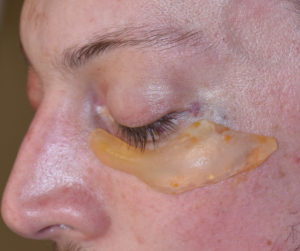The most common method of permanent midface augmentation is that of the cheek implant. Cheek implants have been around for decades and have evolved into a wide variety of styles and sizes. Their fundamental designs have been to augment the prominence of the cheek bone (malar region), the underside of the cheek bone (submalar region) or both. (combined malar-submalar shell or midface implant).
Despite being an adjoining anatomic region to the cheeks and having a smooth skeletal connection, the infraorbital region (undereye area) has been relatively neglected. While there are tear trough implants that can augment the front of the lower eyelid rim, they do not create a smooth and seamless flow into the cheeks nor do they sit on top of the infraorbital rim and increase its vertical height.

While there are numerous injectable materials to fill in undereye hollows, which can be very effective for many patients, an implant can provide an alternative treatment option. But not just any implant design will do and there are no standard undereye hollows implant designs currently available. This special design of mine, technically known as the infraorbital-malar design or undereye hollows implant, can provide an effective and permanent option in the properly selected patient. It provides a more complete correction of the underlying skeletal cause of undereye hollows.
Dr. Barry Eppley
Indianapolis, Indiana


